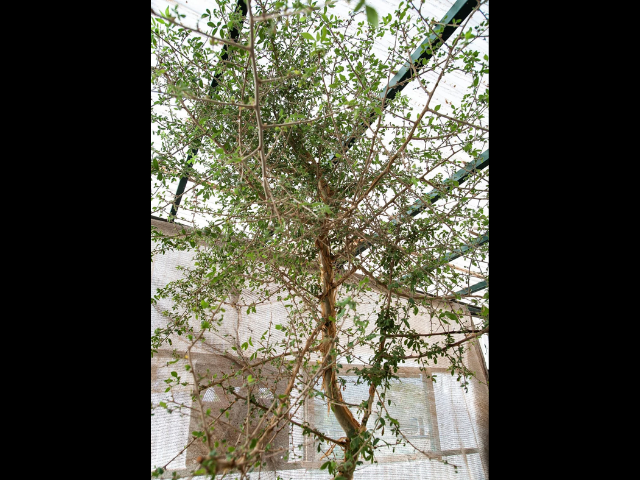1728284466-0/Copy-of-Untitled-(100)1728284466-0.png)
In a botanical achievement, scientists have successfully cultivated a tree from a seed that is approximately 1,000 years old.
This ancient seed was discovered during archaeological excavations in a cave located in the Judean Desert, an American news outlet reported.
The seed was unearthed by archaeologists in the late 1980s, when experts were conducting digs in the caves of the Judean Desert. However, it wasn't until 2010 that Dr. Sarah Sallon, founder of the Louis L. Borick Natural Medicine Research Center in Jerusalem, formed a new study team to plant it and investigate its potential.

The tree, which the study authors believe may have a biblical connection, is seen at 12 years old. Guy Eisner: CNN
To the researchers' surprise, five weeks after planting, a tiny shoot emerged from the seed, a fragment of which was able to be dated, revealing the seed's staggering age of 1,000 years. Remarkably, the tree has thrived and now stands nearly 3 metres tall. Despite its impressive growth, it has never flowered or produced fruit.
Using DNA sequencing, the researchers identified the mystery tree as part of the Commiphora genus, although its exact species remains unknown and is likely extinct.
The team believes it might have a link to a healing plant mentioned in the Bible, showcasing the potential medicinal properties of the newly cultivated tree.
Dr. Sallon and her team, which included researchers from the United States, Switzerland, France, and Australia, employed various techniques for analysis, including radiocarbon dating, DNA sequencing, phylogenetic studies, and phytochemical analysis.
The results were compared with archaeological phytogeographic data and historical materials.
This research reflects a growing interest in resurrecting ancient plant species to explore their evolutionary and genetic diversity.
The findings have been published in the scientific journal Communications Biology, demonstrating the effective combination of archaeology and modern botany to revive historical flora.
The project not only sheds light on ancient plant species but also opens avenues for future studies that could lead to the rediscovery of long-lost species with medicinal properties.
1728298226-0/BeFunky-collage-(31)1728298226-0-405x300.webp)
1728297472-0/Fousey-(1)1728297472-0-165x106.webp)


1728296433-0/Nobody-Wants-This-(1)1728296433-0-165x106.webp)
1728290604-0/Copy-of-Untitled-(99)1728290604-0-270x192.webp)

1728279962-0/Untitled-design-(7)1728279962-0-270x192.webp)
1728296549-0/Untitled-design-(53)1728296549-0-270x192.webp)
1726222459-0/trump-(14)1726222459-0-270x192.webp)
1725004899-0/BeFunky-(20)1725004899-0-270x192.webp)
1728193217-0/Copy-of-Untitled-(6)1728193217-0-270x192.webp)
1727520639-2/Untitled-design-(27)1727520639-2-270x192.webp)
1658648574-0/images-olive-trees-(7)1658648574-0-270x192.webp)







COMMENTS
Comments are moderated and generally will be posted if they are on-topic and not abusive.
For more information, please see our Comments FAQ